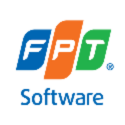No-Code Platforms and Easy Processes Bring the Benefits of Automation
It is now easier than ever to automate key processes. Here is a brief roadmap to help you get started while reducing the risks of project failures.
August 23, 2022

Robotics process automation (RPA) is being adopted by leading enterprises in industries as varied as education, healthcare, government, manufacturing, and more. Now, other organizations are adopting this software technology and reaping its benefits, including standardizing tasks, enabling 24/7 workflows, 100% task accuracy, and cost savings of up to 75%.
Automation Unlocks Worker Creativity
Is automation an evil robot that will steal your employees’ jobs?
Workers often fear being replaced by robots, both when times are good and bad. When organizations have capital at hand, they may invest more in advanced technology such as automation. And when times are bad, they may use automation to replace workers who perform highly routinized tasks.
However, with current workforce shortages, it’s far more likely that automation will free your employees to do more creative jobs. In fact, they can easily become automation experts, using easy-to-learn, no-code platforms to redesign processes for your organization. By learning new skills and earning certificates, these workers can chart a new career path in a high-growth area, earning higher salaries and capitalizing on new opportunities.
Which Processes Are Ripe for Automation?
Every industry has simple tasks that keep processes and business running. However, they add comparatively little value when being performed by humans as they’re defined by rote processes, not employee ingenuity. At your organization, processes such as accounting, payroll management, and employee onboarding and offboarding can be automated. In addition, you can automate supply chain processes such as enterprise resource planning (ERP) data entry, sales orders, invoice processing, and more.
Organizations Are Automating More of Their Businesses
Gartner found that 80% of the organizations it surveyed had increased or continued investment in automation. Furthermore, 56% had an average of four concurrent initiatives proceeding, while leading companies had 10.
This shows that for organizations that haven’t yet adopted automation is that doing it now is key to their very survival. Without automation, some businesses won’t be able to compete against other companies that have adopted it, in terms of matching their operational efficiency, speed of execution, and cost structures.
Automation can also help your organization navigate the continued shortage of skilled labor and deliver a better employee experience. Your staff, as it turns out, don’t want to execute mind-numbing, repetitive processes. They’d rather do tasks that involve brainstorming, creative problem solving, and customer service.
The Good News: It’s Easier Than Ever to Automate Key Processes
However, waiting to adopt automation has also enabled the market and technologies to mature. As a result, it’s now possible for your employees to experiment with off-the-shelf technology and automate simple processes, right at their desktop. For example, anyone can use simple automations to run routine tasks, such as scheduling meetings or generating reports. More tech-savvy users can build automation using no-code platforms available on the market, and professional developers can use advanced software to build more complex processes.
Providing tools to your workforce and letting them experiment and play can help you gain employee support for your automation journey. By so doing, workers can see that automation makes their jobs easier and more enjoyable. And business unit leaders can realize how automation will reduce workloads and deliver cost savings.
Use this Roadmap to Get Started with Automation
Ready to move ahead? This roadmap can help you gain experience, while reducing the risks of project failures.
Assign a project lead: Appoint an automation project lead to head the pilot project. This individual doesn’t need to have developer-level skills but should have some IT experience. Set the lead up for success by providing them with an executive sponsor, budget, and authorization to build a team.
Create the automation team: Select three to five team members from departments that would benefit from deploying automation, such as accounting or human resources. The team should educate themselves on the benefits of automation, including its features, costs, ease of use, and fit for the company.
Begin work: The team should review automation products on the market, select two to three to pilot, and learn everything they can by reading documentation and watching how-to videos. Next, they should select several rote tasks to automate that are being currently performed by individuals in their department. They’ll want to communicate why they’re exploring automation, which is to free individuals from repetitive tasks, not replace them.
Build the tasks: Use intuitive no-code tools to build the automation, test it, and refine it. This process may take a few iterations, but this process ensures that the team considers all steps and builds a quality automation.
Report and plan next steps: The automation team should then present their findings and recommendations to a decision-making group, including their sponsor, who will authorize purchase of a platform. The pilot team and other users should get certified on the automation platform and engage other departments in developing a larger-scale automation strategy.
Want to move faster? FPT Software can set you up for success and reap automation benefits, without having to master the technology yourself or understand its full application to your business.
FPT provides well-defined automation processes, solutions, and services, along with a Vietnamese workforce that has exceptional technology skills and affordable bill rates. We can help you cast a vision for automation and share case studies of how other companies have deployed and the results they’ve achieved.
Next, we help you quickly implement automation technology to automate a few key processes, look for other opportunities to scale automation, and provide clear documentation and training to equip your employees and organization. The ROI on this investment is considerable and will start accruing to your business within weeks.

Chuck Bratton is an award-winning leader with over 30 years of experience in the development of innovative content and platform services. As Vice President of Solutions at FPT Software, he works with customers to evaluate complex business applications and offer strategically innovative solutions that align to business goals, drive revenue, improve customer experience, and provide lasting value. Prior to joining FPT Software he led digital product development and IT functions at various software and media organizations.
You May Also Like





